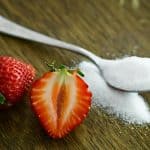Age, as they say, is just a number. However, an older age often brings with it a myriad of health risks and challenges. This article dives into a rich body of knowledge from various scholars, med studies, and Google PMC articles to shed light on the role of regular physical activity in mitigating these health risks. You will discover how exercise is not just for the young and fit, but an essential ingredient for healthy aging.
The Impact of Aging on Physical Health
As adults age, their physical capacity gradually declines, posing a significant risk to their health. With aging, muscle strength and endurance wane, bone density reduces, and metabolism slows down. This part of the article will explore these health challenges and the underlying physiological processes.
Lire également : Unlock your potential: explore personality tests for self-improvement
According to a study published by Google PMC, physical strength tends to decline at a rate of 3% per year after the age of 60. This decline accelerates even faster after the age of 75. The decrease in muscle mass, referred to as sarcopenia, affects both the quality and quantity of an individual’s muscle fibers.
Concurrently, bone density decreases with age, leading to a higher risk of fractures and osteoporosis. A combination of muscle loss and decreased bone density significantly impairs the physical capacity of older adults, making them prone to falls and injuries.
Avez-vous vu cela : Can Mindfulness Meditation Help Regulate Blood Sugar Levels in Diabetics?
Metabolic changes also occur with aging. The body’s ability to effectively convert food into energy slows down, leading to weight gain and associated health problems like diabetes and heart diseases. Additionally, older people may also experience a decline in cognitive function, leading to problems with memory and concentration.
The Role of Physical Activity in Counteracting Aging Effects
Despite the seemingly inevitable health challenges that come with aging, older adults can take an active role in preserving their health and slowing down the aging process. One of the most effective ways to do this is through regular physical activity. In this section, we will explore how exercise helps in combating the health risks associated with aging.
Firstly, regular physical activity helps in maintaining muscle mass and strength. When you exercise, you actively engage your muscles, signalling them to grow and strengthen. By retaining your muscle mass, you can fend off sarcopenia and maintain your physical capacity.
Secondly, physical activity can help maintain bone health. Weight-bearing exercises, such as walking, jogging and weight training, stimulate bone-forming cells, helping to increase bone density and reducing the risk of osteoporosis and fractures.
Regular physical activity also aids in maintaining a healthy metabolism. Exercise increases the heart rate, burns calories and helps in weight management, reducing the risk of obesity and related health problems.
Types of Physical Activities Beneficial for Older Adults
So, what types of physical activities are most beneficial for older adults? In this section, we will outline a few exercises and activities that are particularly suitable for this age group.
Aerobic exercises such as walking, swimming, and cycling are highly effective in maintaining cardiovascular health. These exercises increase heart rate and breathing, improving the body’s oxygen use and leading to healthier heart and lungs.
Strength training exercises, like weight lifting, can help maintain muscle mass and strength. These exercises involve the use of resistance, such as weights, to stimulate muscle growth and increase strength.
Balance exercises are crucial for older adults, as they help in preventing falls, a common problem in this age group. Activities such as yoga and tai chi can help improve balance and coordination.
Flexibility exercises, such as stretching, can help maintain the body’s range of motion, making it easier to perform daily tasks and improve overall quality of life.
Adherence to Physical Activity in Aging
While it’s clear that regular exercise holds numerous benefits for older adults, adherence to a physical activity regimen often proves challenging. This section will explore the barriers to exercise among older adults and provide tips on how to overcome them.
Common obstacles to physical activity in older adults include lack of time, fear of injury, a lack of motivation, and health conditions that limit mobility. However, these challenges can be overcome.
For instance, exercise can be incorporated into daily routines, making it feel less like a chore. Short walks, gardening, and even house chores can contribute to physical activity. To address the fear of injury, older adults can start with low-intensity exercises and gradually increase the intensity.
To boost motivation, setting achievable short-term goals can be helpful. Additionally, joining a group exercise class or finding a workout buddy can provide social support and encouragement.
Finally, it’s critical to remember that any physical activity, no matter how small, is better than none. Every step counts, and even small improvements in physical activity can have significant health benefits.
The Interplay of Physical Activity, Health, and Aging in the Long Run
Physical activity is a powerful tool that you can use to take control of your health and age gracefully. Regular exercise can help counter physical health challenges associated with aging, maintain muscle strength and bone health, improve metabolism and enhance cognitive function.
While it may seem challenging to start and stick to a physical activity regimen, there are strategies to overcome these barriers. By incorporating exercise into daily routines, starting slow, setting achievable goals, and seeking social support, older adults can significantly improve their health and quality of life.
Remember, it’s never too late to start exercising. As an older adult, your body may have changed, but your capacity to engage in physical activities and reap their benefits remains. Seize control of your health, start moving, and age with grace and vitality.
Enhancing Cognitive Function Through Regular Exercise
The benefits of regular physical activity extend beyond the physical aspects. In this segment, we will delve into how regular exercise can help older adults maintain and enhance cognitive function, and subsequently, quality of life.
According to research cited in Google Scholar, regular physical activity can help improve cognitive function in older adults. A study highlighted in a PubMed Google article pointed out that older adults who engage in regular moderate to vigorous-intensity aerobic exercises showed improved attention, processing speed, and memory. This is because exercise aids in the development of new brain cells and increases the connections between neurons.
Additionally, physical activity can help combat depression and anxiety, which often exacerbate cognitive decline. Exercise triggers the release of endorphins, the body’s natural mood enhancers, leading to improved mood and a sense of well-being.
Furthermore, engaging in regular physical activity can enhance sleep quality among older adults. Adequate sleep is essential for cognitive function; poor sleep or insomnia can lead to memory problems and difficulty focusing.
Incorporating regular physical activity into your routine can provide a cognitive boost, making it an integral component in successful aging. Exercises such as dancing or playing a sport can also be mentally stimulating, fostering mental agility while providing physical benefits.
Conclusion: Embracing Physical Activity for Healthy Aging
This article has highlighted the importance of regular physical activity in mitigating the effects of aging. With age, physical capacity declines, muscle mass decreases, and the risk of ailments such as osteoporosis and heart diseases increases. Regular exercise can help counteract these health challenges, maintain skeletal muscle mass and bone health, and improve metabolism.
Beyond the physical health benefits, regular physical activity can also enhance cognitive function, improve mood, and boost sleep quality for older adults. These benefits together contribute to an overall improved quality of life.
However, adherence to a physical activity regimen can be challenging for older adults. The key is to find enjoyable activities that can be seamlessly integrated into daily routines. Whether it’s walking, gardening, yoga, or strength training, what’s essential is that these activities are sustainable and enjoyable.
In conclusion, regular physical activity is a powerful tool in promoting healthy aging. It provides a multitude of health benefits, from preserving muscle mass and bone health to enhancing cognitive function and improving mood. By integrating exercise into daily routines, setting realistic goals, and seeking social support, older adults can lead healthier, more vibrant lives.
Indeed, age is just a number. But as this PMC free article has shown, regular exercise can make that number more meaningful, allowing older people to age with grace, strength, and vitality.










